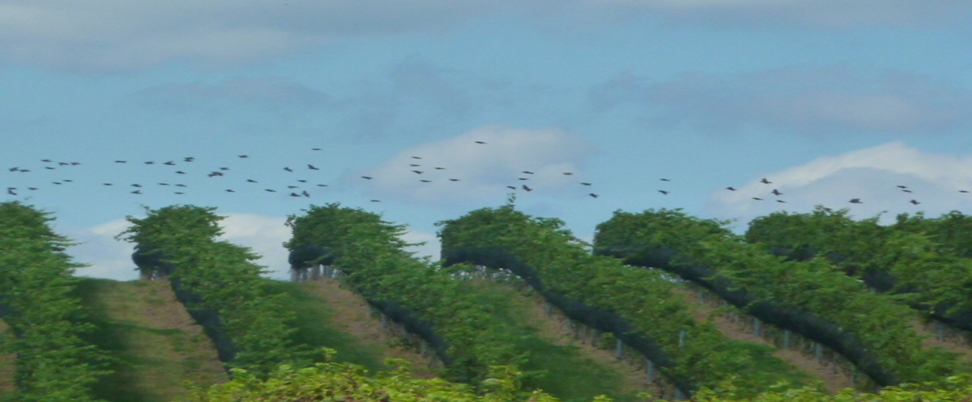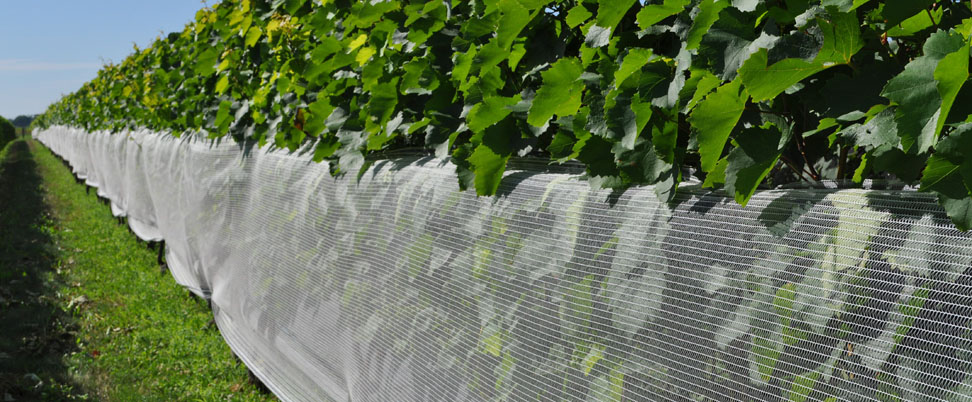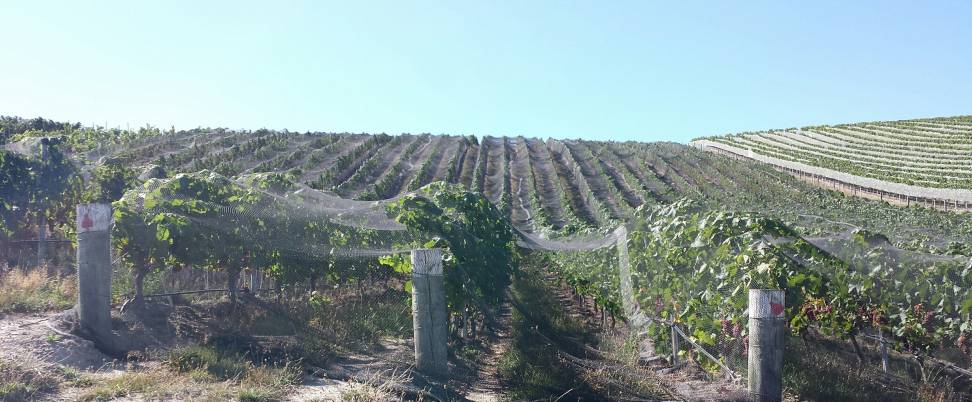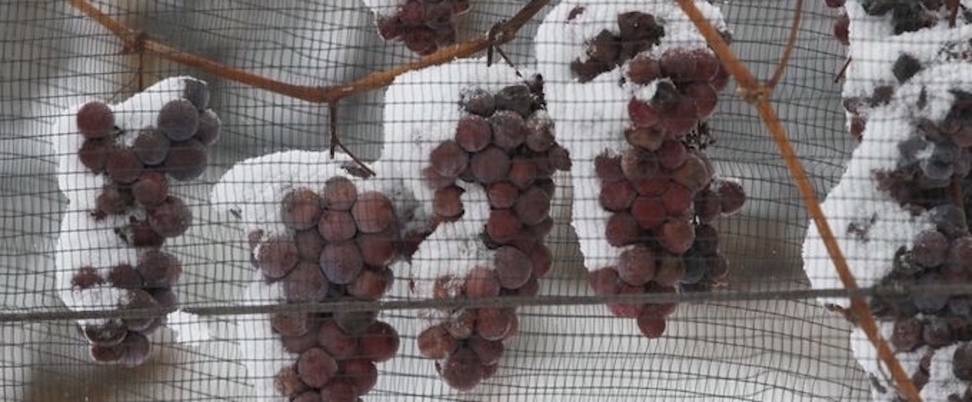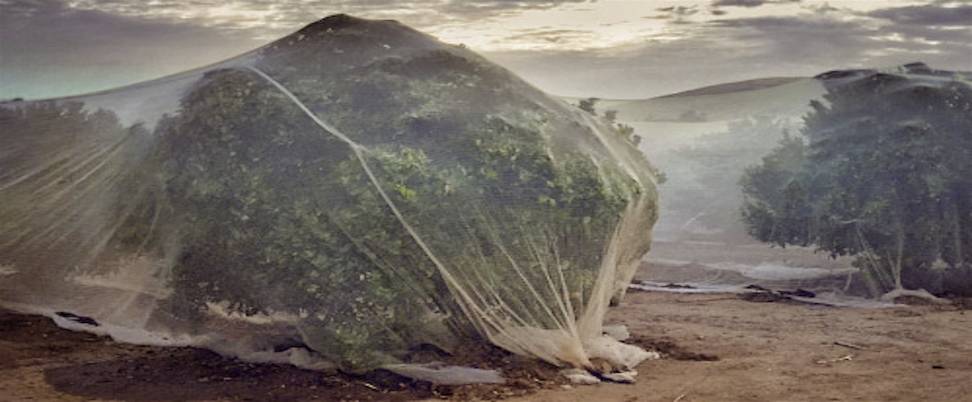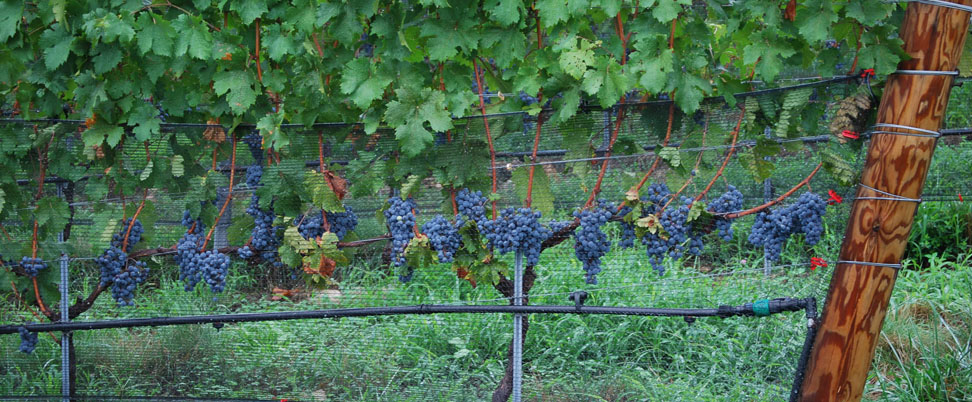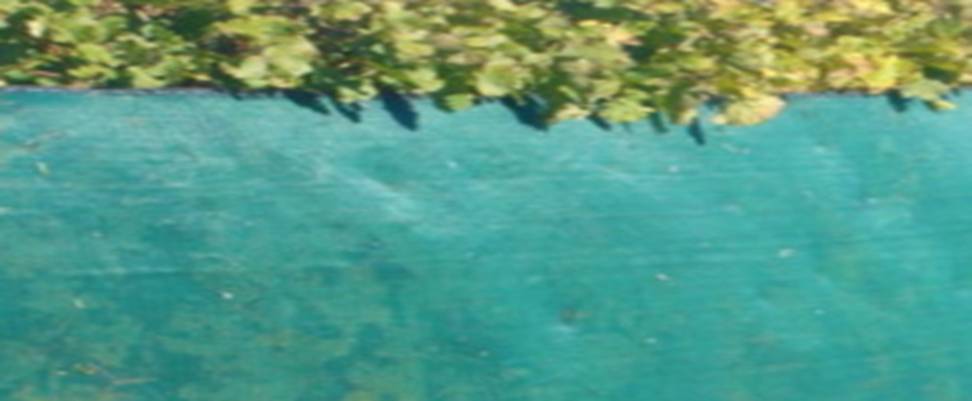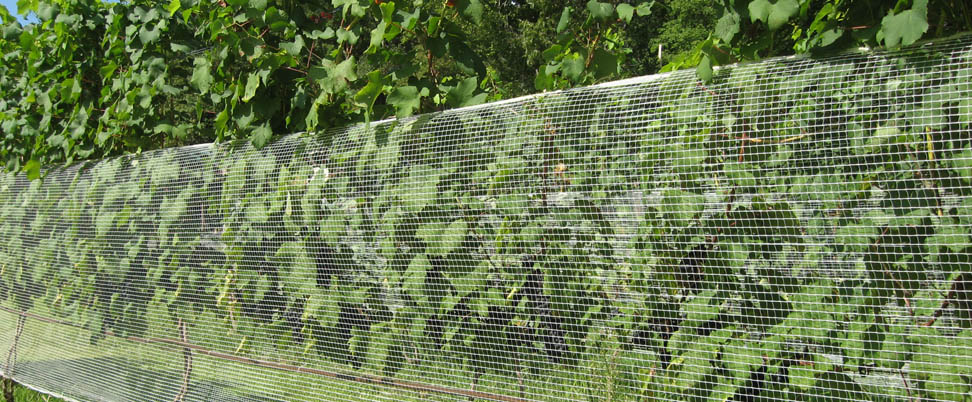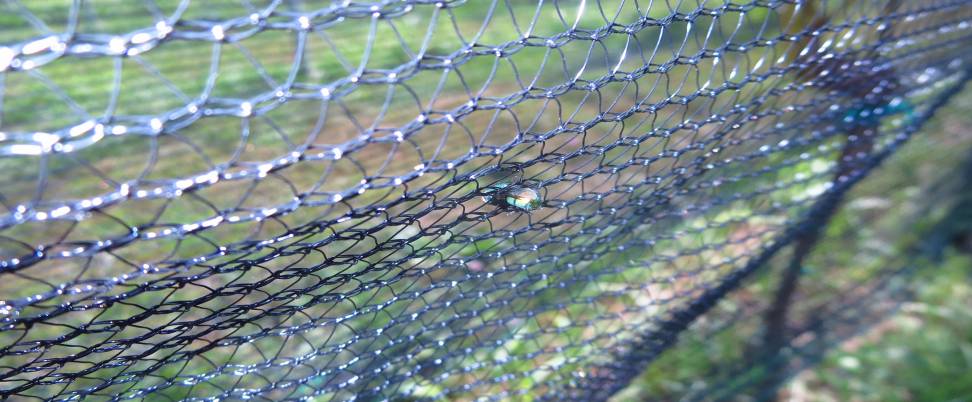Frequently Asked Questions On Bird Netting
- Why use Bird Netting?
-
Over the years, several other bird deterrent devices have been developed. Examples of these are balloons, audible scarers, rotating mirrors, gas guns and even natural predators like Falcons.
All of these can be effective for some time and in most circumstances, but bird netting has consistently outperformed these other devices as it forms a physical barrier to keep birds away from valuable crops.
-
- How is do you measure bird netting?
-
The technical parameters used to in vine bird netting are:
Width (Inches, Feet or Metres),
Length (Feet or Metres),
Weight (Oz./Sq. Yd., or Grams Per Sq. Metre),
Mesh size/hole size (Inches or Millimetres).
-
- What types of mesh (aperture) patterns are there?
-
There are two types of meshes available in Bird netting:
Diamond shaped meshes.
The size of a diamond shape mesh is measured along the length of one side of the diamond and expressed in millimetres or inches when fully expanded.Hexagonal shaped meshes.
The size of the hexagonal shape mesh is measured across the sides of hexagon and expressed in millimetres or inches when fully expanded. Hexagonal is a more stable mesh shape and offers more strength due to having more sides than the diamond pattern mesh option.A 15mm (5/8”) diamond or hexagonal mesh is small enough to prevent silvereyes and all other birds from getting into the vines while at the same time not obstructing the crucial light and airflow from entering the canopy. Nets with larger meshes are generally cheaper however; smaller birds may be able to push through thus defeating the purpose of netting the crop.
-
- How does weight affect the quality of the net?
-
The weight of the net is normally expressed in “pounds per square yard or grams per square metre”
The weight of netting is directly related to the strength and durability. A heavier net generally uses thicker yarns or a combination of multiple yarns to achieve the higher weight. This makes them stronger and more durable. Consequently, a heavier stronger net is generally more expensive than lighter varieties.
-
- What is the life of nets?
-
Mechanical handling and physical damage to nets is primarily caused through rubbing, snagging and tearing. With over row netting, rubbing can occur on post tops or any other rough surface, which may be in contact with the net. As the nets move due to the winds, this increases the chance of wind rub. However this damage can be minimised by the use of post caps on posts. Snagging occur when the nets on the vines get caught up in nails, wire, care clips, other metal objects or foreign objects such as canes, twigs and other plant matter. If these snags are not identified and released prior to removal of the nets, tearing may result.
Contact with organic solvents, halogens or highly acidic substances will compromise the service life of the netting and void the warranty.
The heavier the weight of the nets, the greater the degree of resistance to rubbing, snagging and tearing. Lightweight and extruded nets offer a far lower resistance and thus have shorter life spans. How nets are stored also plays an important role in their lifespan.
Please see our care instructions for further information.
-
- How critical is UV protection in netting?
-
Ultra Violet Light breaks down untreated plastic netting very quickly. Nets produced from polyethylene without being treated for UV, will weaken and start breaking down in weeks of being exposed to the sun and elements.
UV protection additives are added in several ways to the production process when the yarn is extruded. It is almost impossible to determine the type and percentage of UV additives in netting, without a scientific analysis. A net with very little, or a low grade UV additive can look identical to a net fully treated with the best additive, but would have a fraction of the life expectancy. The UV treatment forms a significant portion of the cost of production, so emphasis should be placed on the UV warranty offered on the netting. Quality netting generally come with a significant UV warranty. For example, Coverplas offers a 10 year pro rata UV warranty on all our nets.
Please see our detailed warranty document for further information.
-
- Which colour of netting is more effective?
-
There have been a couple studies done with mixed results largely because there are so many other variables that affect how the grapes turn out. White nets have been used traditionally; however over the last five years demand for black nets has surpassed the demand for white nets. The choice of colour still remains a personal preference. Black nets offer the following advantages:
- 1. Carbon black additive used is a natural UV inhibitor adding to the UV resistance, and life, of the nets.
- 2. Black nets are aesthetically better as they have a low visual impact tend to blend in with the vines whereas white is quite conspicuous.
- 3. Birds can’t easily see net damage and holes, to enter the nets through.
- 4. Grapes and vines are easier to inspect through the black nets.
-
- Which are the netting styles?
-
There are mainly two types of bird netting for vineyards.
Side Panel Nets
Side Nets are narrow width nets which cover and protect the fruiting zone of the vine while using less netting fabric thereby reducing crop-protection costs. Side nets allow adequate sunlight and airflow to the canopy and economical bird protection. These come on a roll and a more laborious to apply and clip together. They must be well sealed under the vines otherwise birds will get into the gaps. Side nets are still popular for fist cropping situations and, in the view of some growers, offer easier crop maintenance.
Permanent Side Panel Nets. These are side nets designed to be permanently installed on the vines throughout the year. When not in use, these are rolled up and tied to a training wire. These are heavier and more expensive nets however they require minimal annual handling once applied and do not require storage. Extremely popular as they reduce application costs and application times dramatically.
Non-Permanent Side Panel Net. These are side nets designed to be applied and taken off after every season. They are cheaper and lighter nets however require annual handling and storage.
Explore our range
Drape Over Nets
Drape over and multi row nets are throw over “over the row” nets. These are generally laid across the row and drape to the ground on each side. Drape over nets allow adequate sunlight and airflow to the canopy while providing a higher cover of bird protection. They are easier to install and are faster to apply or remove, resulting in reduced costs.Single Row netting is when one row of netting is covered.
Multi Row netting is when 2 or more rows are covered by a single width (piece) of netting.
The actual width of the multi row net required depends on variables such as row width, canopy height and application method (manual or mechanical). The more rows covered, the less the cost of net per hectare and more hectares can be covered in a day. Heavier multi row netting is recommended in high wind areas, exposed or terraced vineyard blocks.
Explore our range
-
- How are nets put on?
-
Side Panel Nets are on rolls and can be applied quite simply with a spindle or bar set up on the back of a tractor. The roll is unwound as the tractor moves forward.
Drape Over Nets use more sophisticated netting applicators available for net application and removal as they are wider and heavier bales. The bales can be applied directly through the applicators. All drape over nets have a contrasting centreline to assist in correctly positioning the net over the vines.
-
- How do you secure the nets?
-
To minimise the problem of birds trying to work their way under the edge of nets or through holes, it is preferable to have excess netting sitting on the ground to ensure a bird proof seal. Without securing the net close to the ground, the net tends to move around in the breeze, exposing possible entry points for the birds. Nets can be fixed to trellis wires or drip wires using trellis ties or vine ties or clips. Some growers also install a tucking wire close to the ground and feed the net under the wire to hold it in place, minimising movement caused by wind. Large surface areas of net can be severely affected by winds, so securing is important in areas subject to windy and stormy conditions.
A further option is to have excess net on the ground and overlap between the rows and either clip or just lay over each other.
Our Multirow nets offer a pre threaded rope or cord to assist with tying down the nets.
Here are answers to some frequently asked questions on Multirow Nets.
-
- How to store nets?
-
Correct storage of nets is important to get the most out of the life of your nets.
Unnecessary exposure to the sun and other elements, storing when wet or in areas where rats and mice may nest, will decrease the life of your nets dramatically. Ensure nets are dry before rolling up. Store in a dry, ventilated area out of sunlight. Store in a vermin proof area.
-
FREQUENTLY ASKED QUESTIONS ON MULTINET™ MULTI-ROW NETTING
- How do multi-row nets work?
- The multi-row system usually covers between 4 and 6 rows at a time (depending on row width) and is ideal for vineyards in extreme wind areas. This method totally locks out all birds and provides a very high level of protection. The Multinet™ multi-row nets have a pre-threaded rope or cord system which eliminates the need for attaching clips or for inserting rope into the net. The rope or cord is UV stabilised for abrasion resistance, strength, and durability.
- How is the rope or cord held in place?
- The rope or cord is held in place by wire care clips positioned on every post on the outer rows of each net and lightly hand tensioned to the head post.
- Do the irrigation flippers work under the Multinet™ net?
- Irrigation flippers may not work effectively due to frosts/ice that may form on the nets.
- Most vineyards take the flippers off.
- Can we spray under the nets?
- Spraying is possible depending upon the canopy height and timing of application.
- The nets are generally minimally affected by most agricultural sprays. Pease see our care instructions guide for information on chemicals to avoid.
- What is the UV warranty of the nets and rope or cord?
- Both Multinet™ and the rope or cord has a 10 year pro-rata warranty against UV degradation. Nets will last longer if handled and stored correctly.
- What about access to the vineyard by machinery?
- The rope or cord is pre threaded into the net so they come off when the nets are taken off thus allowing access of machinery throughout the block
- How do you apply the nets?
- The nets come in clearly labelled bales with coil end markers. Each bale has the block number, rows covered, width, and length clearly marked on it. Simply apply directly out of the bale on a net applicator like the Netwizz. For the next season, mark each bale with the label information and store away.
- What lengths and widths are available?
- Multinet™ nets are made to measure for optimal handling and costs. Certain standard widths are available from 12.5m-20m. Lengths are custom made-to-measure.
- Do we need to make any special changes or additions to use Multinet™?
- The only additions required are wire care clips at the bottom of each post of the first and last row per net as well as post caps on all the posts to prevent snagging.
- In terms of costs, how does Multinet™ compare to side panel nets?
- The initial outlay for the Multinet™ is higher than side netting but the nets quickly pay for themselves given the cost and time savings gained.
- How does the Multinet™ saves time and money?
- There are annual cost savings due to not having to use any clips every season. The Multinet™ allows for faster application and removal with the ability to work several rows at a time. Speeds of up to 7-8ha per day are possible with the Multinet™. This translates to lower labour costs and tie up vineyard machinery for less time.
FREQUENTLY ASKED QUESTIONS ON PERMANENT SIDE PANEL (PSP) NETS
Download the 5 easy installation steps here
Still have a question we haven’t answered?
Please Contact us, we’d be happy to help.
Copyright Coverplas Nets 2016

